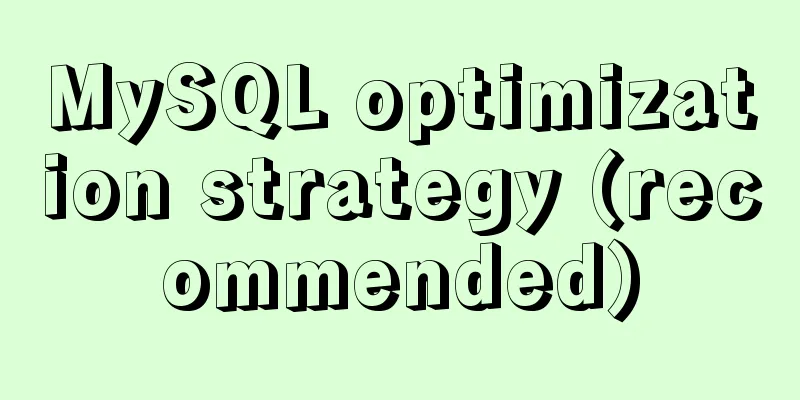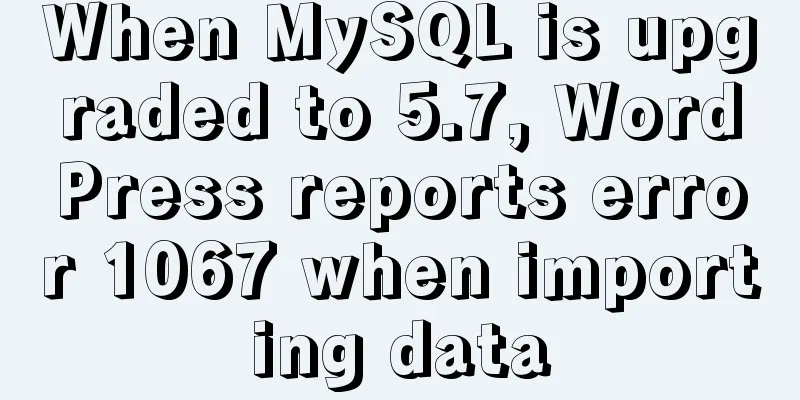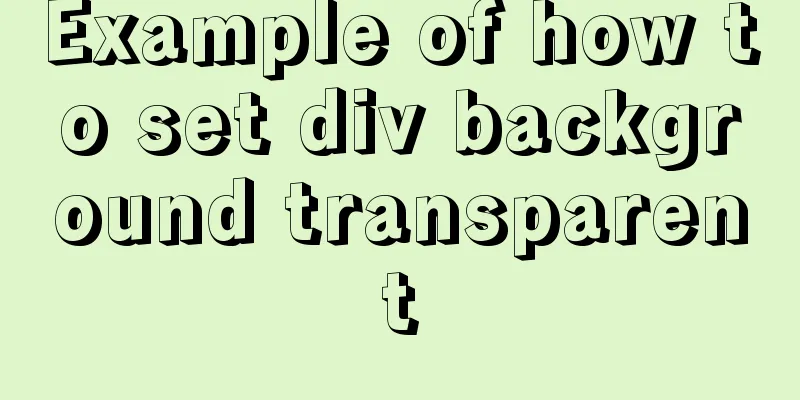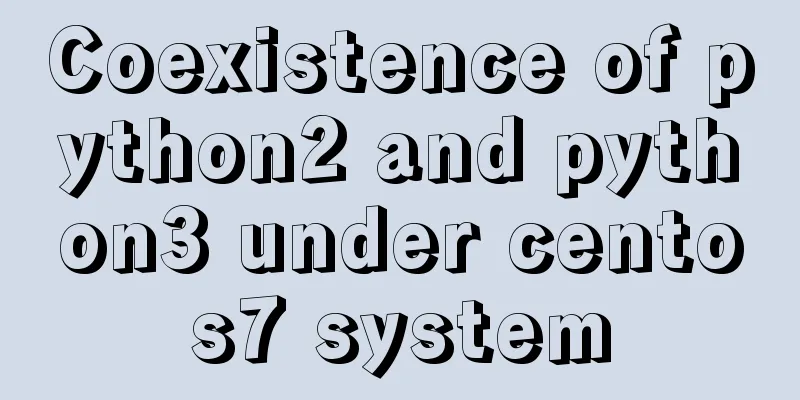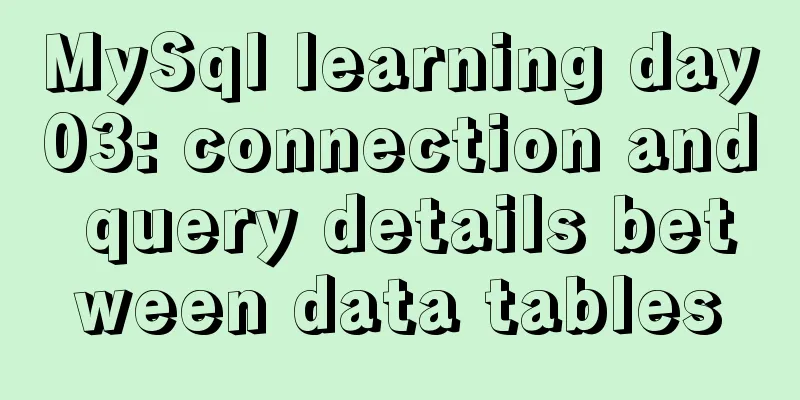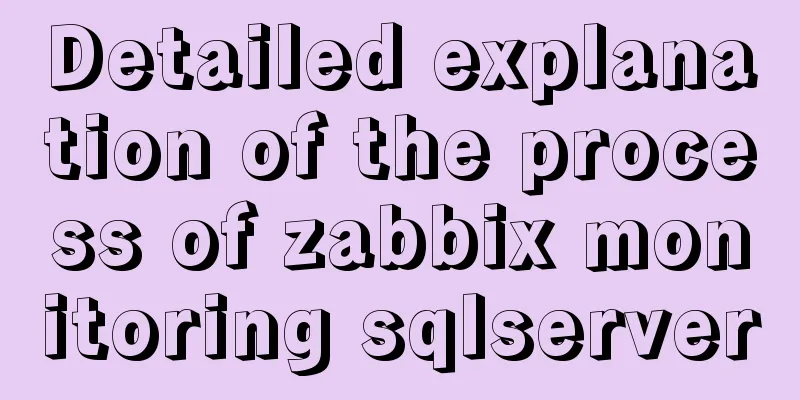Basic usage and examples of yum (recommended)

|
yum command Yum (full name Yellow dog Updater, Modified) is a Shell front-end package manager in Fedora, RedHat and CentOS. Based on RPM package management, it can automatically download and install RPM packages from the specified server, automatically handle dependency relationships, and install all dependent software packages at once without the tedious downloading and installation again and again. yum syntax
The object of package operation. Options -h: Display help information; -y: Answer "yes" to all questions; -c: Specify configuration file; -q: Quiet mode; -v: Verbose mode; -d: Set debug level (0-10); -e: Set error level (0-10); -R: Set the maximum waiting time for yum to process a command; -C: Run completely from cache without downloading or updating any header files. parameter # Common command install: install rpm software package; update: update the rpm package; check-update: Checks whether there is an updated rpm package available; remove: delete the specified rpm package; list: Displays information about software packages; search: check the information of the software package; info: Displays the description and summary information of the specified rpm software package; clean: cleans up the expired yum cache; shell: Enter the yum shell prompt; resolvedep: Displays the dependencies of the rpm software package; localinstall: install the local rpm package; localupdate: Displays the local rpm package for update; deplist: Displays all dependencies of the rpm package. alias List or create command aliases autoremove Remove all unnecessary packages that were originally installed due to dependencies check Find problems in the package database check-update Check if there are any package upgrades clean Delete cached data deplist List the dependencies of packages and the sources that provide these packages distro-sync Synchronize installed packages to the latest available versions downgrade Downgrade packages group Display or use group information help Display a helpful usage message history Display or use transaction history info Display detailed information about a package or package group install Install one or more packages to the system list List one or a group of packages makecache Create a metadata cache mark Mark or unmark packages installed by the user in the installed packages. module interacts with modules. provides Finds packages that provide the specified content reinstall Reinstall a package remove Remove one or more packages from the system repolist Displays configured repositories repoquery Searches for packages matching a keyword repository-packages Runs a command for all packages in the specified repository search Searches for a specified string in the package details shell Runs an interactive DNF terminal swap Runs an interactive DNF terminal to remove or install a spec description file updateinfo Displays reference suggestions for a package upgrade Upgrades one or more packages in the system upgrade-minimal Upgrades, but only the "latest" packages have fixed problems that may affect your system Plugin command list: builddep Install build dependencies for package or spec file changelog View the change log data of the package config-manager Manage dnf configuration options and software repositories copr Interact with the Copr repository debug-dump Dump the installed RPM package information to a file debug-restore Restore the package records in the debug dump file debuginfo-install Install the debugging information package download Download the package to the current directory needs-restarting Determine whether the upgraded binary file needs to be restarted playground Interact with the Playground repository. repoclosure displays a list of unresolved dependencies in the repository repodiff lists the differences between two sets of repositories repograph outputs a complete package dependency graph in a dot-line graph format repomanage manages RPM package directories reposync downloads all packages from a remote repository Install yum install #install all yum install package1 #install the specified installation package package1 yum groupinsall group1 #installation program group group1 Updates and Upgrades yum update #Update all yum update package1 #Update the specified package package1 yum check-update #Check for updatable programs yum upgrade package1 #Upgrade the specified package package1 yum groupupdate group1 #Upgrade program group group1 Find and Display yum info package1 #Display installation package information package1 yum list #Shows all installed and installable packages yum list package1 #Shows the installation status of the specified package package1 yum groupinfo group1 #Display information of program group group1 yum search string Search for installation packages based on keyword string Removing Programs yum remove | erase package1 #Delete package1 yum groupremove group1 #Delete program group group1 yum deplist package1 #View the dependencies of package1 Clear the cache yum clean packages #Clear the packages in the cache directory yum clean headers #Clear the headers in the cache directory yum clean oldheaders #Clear old headers in the cache directory yum clean all #Clear all cache directories Linux configuration yum source Domestic yum source: Alibaba: http://mirrors.aliyun.com NetEase: http://mirrors.163.com USTC: http://mirrors.ustc.edu.cn/ View the yum source configuration [base] #Warehouse namename= #Warehouse descriptionmirrorlist= #Warehouse mirror pathbaseurl= #Warehouse url pathenabled= #Whether the warehouse is enabled, 1 means enabled, 0 means disabledgpgcheck=1 #Key check, 1 means enabled, 0 means disabledgpgkey= #Check the key address. If not checked above, this can be left blank 1. Yum source configuration (network): 1.1 Back up the original yum source first: [root@alliancehacker ~]# mkdir -p /root/back [root@alliancehacker ~]# mv /etc/yum.repos.d/CentOS-Base.repo /root/back/CentOS-Base.repo.back 1.2 Download the new yum source (Ali): // Because I am using centos8, I chose Centos-8.repo as the source [root@alliancehacker ~]# wget -O /etc/yum.repos.d/CentOS-Base.repo http://mirrors.aliyun.com/repo/Centos-8.repo 1.3 Clear the original yum cache: 1.4 Generate a new cache: 1.5 Add multiple network sources: #There are several folders in /etc/yum.repo.d, each folder is a source configuration file. #For example: #(1) local.repo (local source, name optional) [local] name=local baseurl=file:///mnt/cdrom gpgcheck=0 enabled=1 #(II) 163.repo (source of 163) [163] name=163 baseurl=http://mirrors.163.com/centos/7.5.1804/os/x86_64/ gpgcheck=0 enabled=1 #Please note that for the baseurl item, you need to go to http://mirrors.163.com/centos, find the directory of your corresponding redhat version, then click os, then x86_64 (usually both are there), and then replace the baseurl above with the URL displayed in your address bar, save and exit. 1.6 Command Supplement Hopefully the following information can answer your questions: 1. Query the current repo (all, enabled, disabled) Install the software and specify the repo you don't want to use Install software from a repo that is disabled (enabled=0) In a repo setting, specify the package name you want to exclude If there are multiple versions of a software in multiple repos, you can specify the version when installing. 2. Yum source configuration (local): 2.1 Download ISO file Download the full version of CentOS iso file from the CentOS official website and upload it to the Linux file system, for example, /opt/tools/. 2.2 Create a mount directory for the ISO 2.3 Mount the ISO file to the mount directory mount -o loop -t iso9660 /opt/tools/CentOS-7-x86_64-bin-DVD1.iso /mnt/vcdrom 2.4 Remove or back up the original yum source Centos-Base.repo file mv /etc/yum.repos.d/CentOS-Base.repo /etc/yum.repos.d/CentOS-Base.repo.back 2.5 Configure Centos-Media.repo file [root@localhost ~]# cat /etc/yum.repos.d/CentOS-Media.repo [c7-media] name=CentOS-$releasever - Media baseurl=file:///mnt/vcdrom/ #Change baseurl to the mount directory of the DVD gpgcheck=0 #Turn off key detection enabled=1 #Enable the repository #gpgkey=file:///etc/pki/rpm-gpg/RPM-GPG-KEY-CentOS-7 2.6 Clear the original yum cache: 2.7 Generate a new cache: 2.8 Write a script to automatically mount the image at startup [root@localhost ~]#vim /opt/shell/mymount.sh #!/bin/bash # mount -o loop -t iso9660 /opt/tools/CentOS-6.7-x86_64-bin-DVD1.iso /mnt/vcdrom 2.9 Modify script permissions: 2.10 Modify the /etc/rc.local configuration file and add /opt/shell/mymount.sh to the last line of the file [root@localhost ~]#vim /etc/rc.local /opt/shell/mymount.sh 2.11 Restart server test: Example 1: Install php7 using yum Reference: php7.3 installation @centos7 https://www.itgeeker.net/php7-3-yum-install-on-centos-7/ https://dl.fedoraproject.org/pub/epel/ http://rpms.remirepo.net/enterprise Go to this website to find your own version and replace it. Some sources may become invalid, so find a usable one yourself. #Add a few sources, otherwise an error will be reported #The yum source address of the higher version of php has two parts, one of which is epel-release and the other is from webtatic. If you skip epel-release, install webtatic with rpm -Uvh https://dl.fedoraproject.org/pub/epel/epel-release-latest-8.noarch.rpm rpm -Uvh http://rpms.remirepo.net/enterprise/remi-release-8.rpm Install the extensions you want yum --enablerepo=remi install php73-php php73-php-pear php73-php-bcmath php73-php-pecl-jsond-devel php73-php-mysqlnd php73-php-gd php73-php-common php73-php-fpm php73-php-intl php73-php-cli php73-php php73-php-xml php73-php-opcache php73-php-pecl-apcu php73-php-pdo php73-php-gmp php73-php-process php73-php-pecl-imagick php73-php-devel php73-php-mbstring php73-php-zip php73-php-ldap php73-php-imap php73-php-pecl-mcrypt Run and view the version, restart command, add automatic startup, link php file # The current PHP memory limit is below the recommended value of 512MB. vi /etc/opt/remi/php73/php.ini memory_limit = 512M #If you are running nginx instead of apache, modify vi /etc/opt/remi/php73/php-fpm.d/www.conf user = apache group = apache # Replace the values with user = nginx group = nginx Uninstall all php7.3 Summarize The above is the basic usage and examples of yum under Liunx (centos8) introduced by the editor. I hope it will be helpful to everyone! You may also be interested in:
|
<<: JavaScript event loop case study
>>: A simple method to regularly delete expired data records in MySQL
Recommend
Basic knowledge: What does http mean before a website address?
What is HTTP? When we want to browse a website, w...
Let’s take a look at JavaScript precompilation (summary)
JS running trilogy js running code is divided int...
Detailed explanation of the difference between docker-compose ports and expose
There are two ways to expose container ports in d...
How to install Jenkins on CentOS 8
To install Jenkins on CentOS 8, you need to use t...
Docker View JVM Memory Usage
1. Enter the host machine of the docker container...
Use of Linux tr command
1. Introduction tr is used to convert or delete a...
How to install redis5.0.3 in docker
1. Pull the official 5.0.3 image [root@localhost ...
Docker installation tutorial in Linux environment
1. Installation environment Docker supports the f...
Summarize the common application problems of XHTML code
Over a period of time, I found that many people d...
Detailed explanation of the principle and function of JavaScript closure
Table of contents Introduction Uses of closures C...
Detailed tutorial on installing MYSQL under WINDOWS
1. Download the installation package -Choose the ...
The iframe refresh method is more convenient
How to refresh iframe 1. To refresh, you can use j...
Analysis of MySQL's method of implementing fuzzy string replacement based on regular expressions
This article uses an example to describe how to u...
MySQL database JDBC programming (Java connects to MySQL)
Table of contents 1. Basic conditions for databas...
harborRestart operation after modifying the configuration file
I won't say much nonsense, let's just loo...
